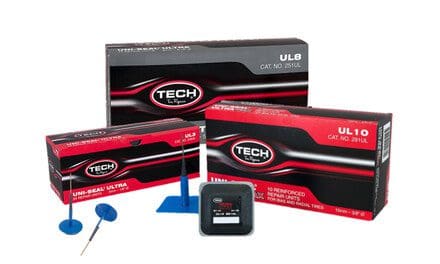TIRE REPAIRS
Repairs should always be done by a trained professional, as improper repairs can compromise the safety and performance of your tires. Here are the general steps involved in a proper repair for passenger cars:
- Inspection: The tire is inspected to determine the location and extent of the damage. If the puncture is on the sidewall, near the shoulder, or is larger than 1/4 inch in diameter, the tire may need to be replaced.
- Removal: The tire is removed from the wheel and the puncture is inspected from the inside to determine if it can be repaired.
- Preparation: The puncture is cleaned and prepped for repair, which may involve roughing up the surface and applying a vulcanizing agent.
- Patching: A patch is applied to the inside of the tire, which is then vulcanized to create a permanent bond.
- Remounting and Balancing: The tire is remounted on the wheel and rebalanced to ensure smooth performance and minimize vibration.
It's important to note that not all punctures can be repaired, and some tires may need to be replaced. Additionally, it's important to follow proper inflation and maintenance procedures to maximize the life of your tires and prevent future punctures or damage. Always consult a trained professional for tire repairs and maintenance.
Note:
Tires don't just "lose air" or need a quick "top up". There is always a reason why your tire or tires are going low.
WHY DOES MY TIRE KEEP GOING FLAT?
2 reasons
- An object has penetrated your tire and it needs to be repaired
- Slow leak (either bead leak - wheel corrosion) or Sidewall Leak (tire replacement)
At Central Tire Edmonton we use ONLY Uni-Seal radial tire designed "patch/plug" systems to repair your tire as the only way to permanently repair your tire properly as recommended by the Rubber Manufacturer's Association.

TIRE REPAIRS
Have your tire repaired quickly and properly by one of our trained tire techs, no appointment is required

